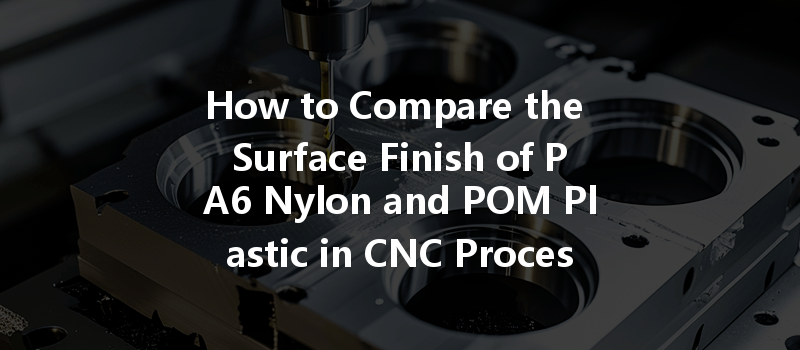Did you know that the type of thermoplastic you choose can drastically affect the performance and longevity of your manufactured parts? Indeed, materials like PA6 nylon and POM (Polyoxymethylene) are at the forefront of modern manufacturing, particularly in the realm of CNC (Computer Numerical Control) processing. But when it comes to selecting materials for your project, the differences in surface finish between these two polymers can determine not just aesthetic appeal but functional performance as well.
With applications ranging from automotive to mechanical components, understanding how the surface finish of PA6 nylon compares to that of POM plastic in CNC processing can be crucial for engineers, manufacturers, and design professionals alike. This blog will delve into the intricacies of these materials, examining their properties, processing methods, and resultant surface finishes in a detailed and structured manner.
—
1.
Polyamide 6, commonly known as PA6 nylon, is a synthetic polymer that offers high strength and elasticity. It has a long history of use in many industries due to its outstanding mechanical properties, chemical resistance, and wear resilience. Here are some key attributes of PA6 nylon:
1.
POM, also known as acetal or polyoxymethylene, is another versatile thermoplastic celebrated for its high stiffness and low friction properties. It is often selected for precision parts that do not require significant structural support. Key characteristics include:
—
2.
Surface finish is defined as the texture and appearance of a surface, which can affect a part’s performance in various ways, including friction, wear, and aesthetic qualities. The surface finish can also influence the part’s fatigue life and its ability to resist environmental degradation.
2.
The desired surface finish is determined by multiple factors, including the application of the part, the machining process used, and the intended aesthetic finish. Various surface finish characteristics include:
—
3.
To evaluate the comparison of surface finishes, it’s essential to understand the CNC processing techniques used for both materials:
3.
Comparing the resultant surface finishes of PA6 nylon and POM plastic after CNC machining reveals distinct differences:

3.
While choosing one material over the other, consideration must be given to the application:
—
4.
The quality of tooling can significantly affect the surface finish:
4.
4.
Using appropriate cooling methods can significantly improve the surface finish:
—
5.
To ensure that the surface finish meets specifications, a range of measurement techniques can be employed:
5.
Testing the mechanical performance of parts made from both materials can highlight the relationship between surface finish and functionality:
—
In summary, the choice between PA6 nylon and POM plastic for CNC machining largely depends on the specific requirements of your project. While PA6 nylon offers superior toughness and impact resistance, POM excels in providing a smoother, more consistent surface finish essential for precision applications.
When making a decision, it is vital to consider not just the inherent properties of each material but also the effects of CNC processing techniques on surface finish. The techniques discussed in this blog—from selecting the right tooling to implementing effective quality control measures—can significantly affect the final outcome.
Understanding the similarities and differences between PA6 nylon and POM plastic, particularly regarding surface finish, can place you in a competitive position in the manufacturing landscape. Thoughtful material selection and meticulous processing can lead to products that not only meet specifications but excel in performance.
Ultimately, the pursuit of optimal surface finish in CNC processing isn’t just a matter of aesthetics; it’s about ensuring quality that lasts. With the insights and techniques covered in this blog, you’ll be better equipped to make informed decisions for your next machining project.
Take your time to reflect on the material choice and its impact on functionality and appearance in your applications; after all, making the right decision now can save time and costs in the future, leading to more successful projects overall.






